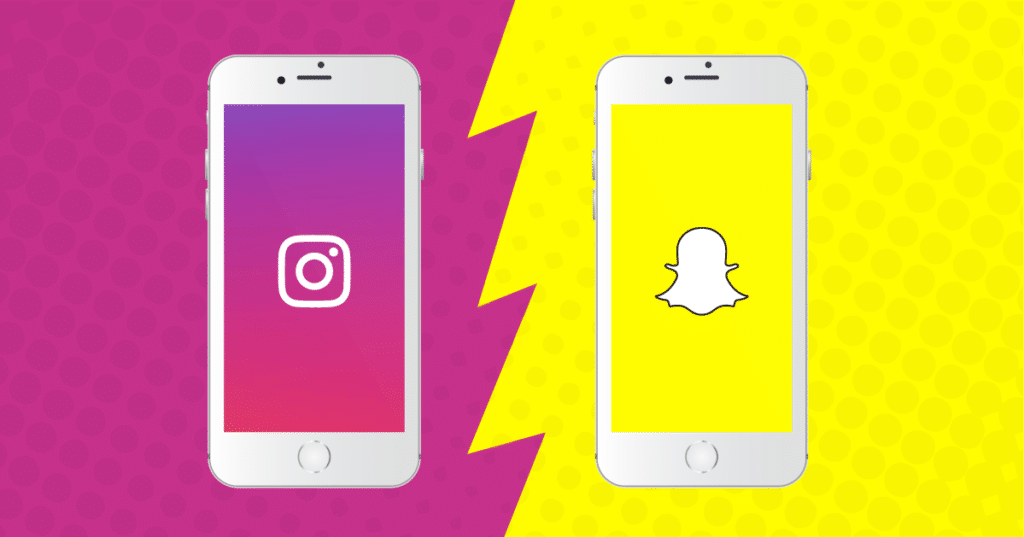Disappearing Content & Stories on Social Media

What is disappearing content on social media?
Disappearing content on social media is content that is ephemeral and can only be viewed for a short period of time unless it has been pinned to your profile. The content “disappears” unless otherwise pinned. Users find this type of content easier to consume and create, sparking the recent surge in popularity.
What is a disappearing story?
A disappearing story is a story on Instagram, Facebook or LinkedIn that vanishes after 24 hours.
Why does every social media have stories?
Every social media network is focused on monetization. One way to increase monetization is by placing ads in between story viewing to keep people on the app.
Social Media Disappearing Story Comparison List
As a business owner, you can use these features to capture a sense of spontaneity and engage with your customers. But which network should you choose? We explore the pros and cons of each platform.
Facebook Messenger Day | Stories
Facebook rolled out a new feature on March 9th merged into its Messenger chat application called “Day.” Inspired by Snapchat, it allows you to post video or image content that lasts for 24 hours. Afterwards, your posted content disappears.
Facebook is not the first social network to copy Snapchat’s innovative Stories feature. Instagram has done the same (also calling their feature “Stories”). The previous month, WhatsApp followed suit, adding an update to their “Status” feature.
Facebook Monthly Active Users: 2.41 billion
Facebook Largest Demographic: 25-34, followed by 35-44, 18-24, and 45-54
Facebook Stories Pros: Because it’s brand new, fewer people use Facebook Messenger Day, which means your posts may not get lost in the crowd. This is ample livestream “real estate” to broadcast your day to people who otherwise may not use livestreaming platforms. Additionally, Facebook is still the most popular social network with the largest overall reach. As Messenger Day matures, this may ultimately result in a broader reach than you will find elsewhere. Facebook’s demographics are well distributed among middle-aged users. If your business is targeting a middle-aged demographic, this would be the perfect livestream feature to capture their attention.
Facebook Stories Cons: Because Facebook Messenger Day is still new, your reach may be limited. Functionality is lacking in a few areas as well. There is still no indication that Frames are available for use with Day posts, which restricts geographic discoverability. Day also does not work with Facebook pages right now; it’s only available to individual users. That means you must use a personal account, which may be difficult if all of your business content is on your company fan page. Facebook Messenger Day is also still missing features that exist on Snapchat and Instagram, such as 3D stickers, swipeable filters and brush styles.
*Facebook Messenger Day has been replaced by Facebook Stories.
Instagram Stories
Instagram Monthly Active Users: 2 billion
Instagram Largest Demographic: 25-34, followed by 18-24
Instagram Stories Pros: Instagram is arguably the best overall choice for most businesses. This social network has more monthly active users than Snapchat. While it has fewer active users than Facebook or WhatsApp, Instagram Stories is far more established than Day or Status. For right now, it provides the best reach. Instagram is particularly popular with millennials, making it ideal to reach the younger generation. Like Snapchat, Instagram is well established and sports numerous features like brush styles and GIF capture. So, you can customize your posts—perfect for letting your employees showcase your corporate culture. The growth of Instagram Stories has surpassed the growth of Instagram feed posts with millennial users. Millennials were already used to utilizing this format from Snapchat and quickly adapted to it when Instagram Stories took off.
Instagram Stories Cons: Instagram is a particularly popular network among marketers, so you may find yourself vying for attention. This is because Instagram is well established as a visual platform and provides a broader reach than Snapchat.
Snapchat
Snapchat Monthly Active Users: 500 million
Snapchat’s Largest Demographic: 18-24
Snapchat Pros: Twenty-three percent of Snapchat users are between the ages of 13 and 17. So, if you’re targeting gen Z, Snapchat will provide you with fine-tuned visibility. It has many advanced features like 3D stickers and the ability to export to other platforms, so you can customize your posts. Another advantage is that Snapchat is well established and was the leader in developing this feature. Because it was the original livestream, it still has the most “authentic” vibe.
Snapchat Cons: Snapchat is not as useful for reaching baby boomers and Instagram stories may be a more ideal platform for reaching millennials who are already active users of the platform. For this reason, its utility within a B2B context is limited.
WhatsApp Status
WhatsApp Monthly Active Users : 2 billion
WhatsApp Largest Demographic: 25-34, followed by 35-44
WhatsApp Pros: As with Facebook Messenger Day, WhatsApp Status is relatively new in its current incarnation and not yet oversaturated. WhatsApp has a large user base and gives you access to a wide age distribution. Status updates are encrypted, perfect for reaching out privately to a single customer or associate. Another interesting feature about WhatsApp is that it was designed specifically for use on mobile devices, which may make Status the perfect choice for B2B posts in an industry, such as construction, where mobile technology is pervasive.
WhatsApp Cons: Like Messenger Day, this version of Status is not well established, which will restrict reach in the immediate future. Because it’s still in the early stages, it lacks the advanced features available on Snapchat and Instagram Stories.
Ruby Media Groups Picks:
- Best for overall reach: Instagram stories
- Best for targeting Millennials and gen Z: Snapchat, Instagram stories
- Best for targeting baby boomers: Facebook Messenger Day
- Best for privacy: WhatsApp
- Best for mobile reach: WhatsApp
- Best for customization: Snapchat, Instagram Stories
- Best for geographic discoverability: Instagram Stories, Snapchat
Differences in demographics and reach make one platform more appropriate for your brand than the rest. Evaluate your target market and choose the platform that will best reach your customers.
The days of static social media are long gone. It’s no longer enough to post a photo and hope for the best. Every social network is clamoring for your attention and encouraging users to livestream their day. Without taking advantage of these livestream features, you may be missing out on a core functionality of where social media is headed.
WHY STORIES ARE MORE POPULAR THAN FEED POSTS
Stories are where all of the action is right now.
- Stories are an easy way to consume content and there is no etiquette limit to how many stories you can post in a day.
- Newsfeed post etiquette is typically not more than one feed post per day, so many users feel freer to express themselves via Stories.
- Another reason feed posts have declined with millennials? Millennials are afraid to commit. Feed posts require a larger commitment than a disappearing story does.
- A feed post has to fit in with an entire brand aesthetic, whereas a story is a more unfiltered version.
- This aversion to commitment that is evident in the growth of Instagram stories vs feed posts shows a much larger trend among millennials, which is also evident in pushing off marriage and longer-term commitment.
The Future of Social Media Stories:
Publishers are creating episodic content for Instagram Stories in the same way producers create packaged content for traditional television.
This will create an abundance of new jobs and opportunities. More digital marketing agencies are creating in-house video production studio offerings to stay competitive. Additionally, new jobs are being created specifically around Social Media stories. These jobs include:
- The creation of graphics and video production for Instagram stories
- Ad sales of sponsored content of Instagram stories
- Partnership development of Instagram stories
- Branded influencer marketing of Instagram Stories
- Producers for Instagram story series production
Kris Ruby is the CEO of Ruby Media Group, a public relations and social media agency. Ruby is a frequent on-air TV contributor and speaks on social media, tech trends and crisis communications. For more information, visit rubymediagroup.com or krisruby.com
Photo Credit: Kara Hendrick, Women in Digital
KRIS RUBY is the CEO of Ruby Media Group, an award-winning public relations and media relations agency in Westchester County, New York. Kris Ruby has more than 15 years of experience in the Media industry. She is a sought-after media relations strategist, content creator and public relations consultant. Kris Ruby is also a national television commentator and political pundit and she has appeared on national TV programs over 200 times covering big tech bias, politics and social media. She is a trusted media source and frequent on-air commentator on social media, tech trends and crisis communications and frequently speaks on FOX News and other TV networks. She has been featured as a published author in OBSERVER, ADWEEK, and countless other industry publications. Her research on brand activism and cancel culture is widely distributed and referenced. She graduated from Boston University’s College of Communication with a major in public relations and is a founding member of The Young Entrepreneurs Council. She is also the host of The Kris Ruby Podcast Show, a show focusing on the politics of big tech and the social media industry. Kris is focused on PR for SEO and leveraging content marketing strategies to help clients get the most out of their media coverage.

